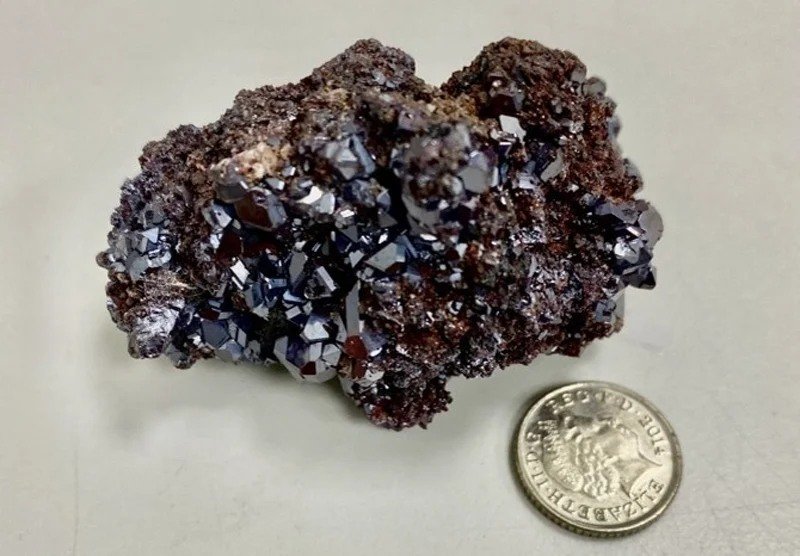
One of the manners in which we can completely understand the capability of quantum PCs is by putting together them with respect to both light and matter – along these lines, data can be put away and handled, yet additionally travel at the speed of light.
Researchers have quite recently made a stride nearer to this objective, by effectively delivering the biggest cross breed particles of light and matter at any point made.
These quasiparticles, known as Rydberg polaritons, were made with the assistance of a piece of stone containing cuprous oxide (Cu2O) precious stones from an antiquated store in Namibia, one of only a handful of exceptional spots in the reality where cuprous oxide has been found in gemstone quality.
The gem recovered from the stone was cleaned and diminished to not exactly the width of a human hair and sandwiched between two mirrors to trap light, bringing about Rydberg polaritons multiple times bigger than any recently seen.
This accomplishment carries us closer to creating a quantum test system that can run off these Rydberg polaritons, involving quantum bits or qubits to store data in 0s, 1s, and different qualities in the middle – instead of simply the 1s and 0s of old style registering pieces.
“Making a quantum test system with light is the sacred goal of science,” says physicist Hamid Ohadi, from the University of St Andrews in the UK.
“We have taken a gigantic jump towards this by making Rydberg polaritons, its vital element.”
What makes Rydberg polaritons so extraordinary is that they switch persistently from light to issue and back once more. The scientists contrast the light and matter with cut out of the same cloth, and it’s the matter side where polaritons can cooperate with one another.
This is significant, on the grounds that light particles move rapidly, yet don’t collaborate with one another. Matter is more slow, yet it can collaborate. Assembling these two capacities could assist with opening the capability of quantum PCs.
This adaptability is urgent in overseeing quantum expresses that stay unclear until they’re noticed. A completely working quantum PC based on this innovation stays some way off, however we’re currently nearer than at any other time to having the option to assemble one.
Rydberg polaritons are shaped through the coupling of excitons and photons. This is where the old gemstone from Namibia came in: Cuprous oxide is a superconductor, a material that permits electrons to stream without obstruction – and past exploration had shown that it contained goliath Rydberg excitons.
Excitons are electrically unbiased quasiparticles that can be constrained, under the right circumstances, to couple with light particles. These huge excitons viewed in cuprous oxide are capable as combined with photons inside a unique set-up known as a Fabry-Pérot microcavity – basically a mirror sandwich.
This was a critical component in having the option to make the bigger Rydberg polaritons.
“Buying the stone on eBay was simple,” says physicist Sai Kiran Rajendran, from the University of St Andrews. “The test was to make Rydberg polaritons that exist in a very restricted variety range.”
When completely fit quantum PCs can be assembled – maybe involving these Rydberg polaritons – the dramatic upgrades in figuring power will empower them to handle tremendously complex estimations past the extent of the PCs we have today.
xamples set forward by the scientists incorporate the improvement of high-temperature superconducting materials, and seeing more about how proteins overlap (possibly expanding our capacity to create drug medicines).
The strategies illustrated in the new exploration should be refined further for these particles to be utilized in quantum circuits, yet the fundamentals are currently there – and the group figures their outcomes can be developed in the future as well.
“These outcomes prepare towards acknowledging emphatically associating exciton-polaritons and investigating unequivocally corresponded periods of issue utilizing light on a chip,” compose the scientists in their paper.
